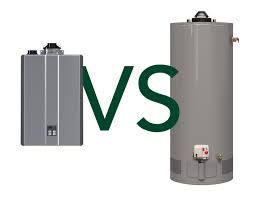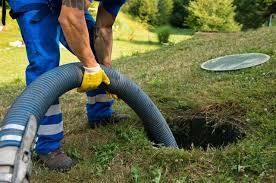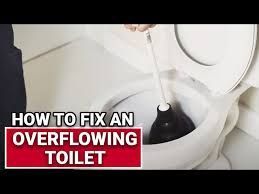Should I Call a Plumber or Do It Myself?
Plumbing issues can be unpredictable, striking at the most inconvenient times. When a faucet starts leaking, a drain clogs, or a toilet refuses to flush properly, you may wonder whether to roll up your sleeves and fix it yourself or call a professional plumber. The decision isn’t always straightforward. Some problems are easy to handle with a wrench and a bit of patience, while others can quickly spiral into costly disasters if not addressed correctly. Knowing when to tackle a plumbing issue yourself and when to bring in an expert can save you time, money, and frustration.
The Importance of Regular Plumbing Maintenance
Understanding the Scope of the Problem
The first step in deciding whether to DIY or call a plumber is assessing the severity of the problem. Minor issues, such as a slow-draining sink or a loose faucet handle, are often manageable with basic tools and a little research. However, more complex issues—like hidden leaks, burst pipes, or problems with your main water line—demand professional expertise. Ignoring or incorrectly fixing a plumbing problem can lead to extensive water damage, mold growth, and even structural issues in your home.
Common DIY Plumbing Fixes
Fixing a Clogged Drain
A clogged drain is one of the most common household plumbing problems and is usually manageable without professional help. Most minor clogs can be cleared with a plunger, a drain snake, or a mixture of baking soda and vinegar followed by hot water. For tougher clogs, a drain auger can break up obstructions deeper in the pipes. However, if multiple drains in your home are slow or backing up, this could indicate a serious issue in your main sewer line, which requires a plumber’s expertise.
Repairing a Leaky Faucet
A dripping faucet may seem like a small annoyance, but over time, it can waste a significant amount of water. If the issue is a worn-out washer or O-ring, replacing these parts is a simple fix that only requires basic tools like a wrench and screwdriver. However, if the leak persists after replacing these components, it could indicate corrosion or deeper internal damage that may require a plumber’s expertise.
Replacing a Toilet Flapper or Handle
If your toilet runs constantly, the culprit is often a worn-out flapper or faulty handle. Replacing these parts is a quick and inexpensive repair that doesn’t require professional help. However, if your toilet is leaking at the base or there’s a crack in the porcelain, it’s best to call a plumber to avoid further damage.
When to Call a Professional Plumber
Persistent or Severe Leaks
If you notice water stains on your walls or ceilings, hear dripping sounds from hidden pipes, or see an unexpected spike in your water bill, you might have a hidden leak. Identifying and fixing hidden leaks requires specialized tools like moisture meters and pipe cameras, which professional plumbers have at their disposal. Ignoring a hidden leak can lead to costly repairs due to water damage and mold growth.
Low Water Pressure Throughout the House
If only one faucet has low water pressure, it might be due to a clogged aerator, which you can clean yourself. However, if the water pressure is low in multiple fixtures, the problem could be with your main water supply, corroded pipes, or even a hidden leak. Diagnosing and fixing this issue is best left to a plumber to prevent further damage.
Burst Pipes and Major Leaks
A burst pipe is an emergency that requires immediate professional intervention. Shutting off the water supply can temporarily prevent flooding, but a plumber is needed to repair or replace the damaged pipe. Attempting to fix a burst pipe without proper knowledge can lead to improper sealing and further leaks.
Sewer Line Issues
If you notice foul odors coming from your drains, multiple plumbing fixtures backing up at once, or gurgling sounds in your pipes, you could have a sewer line problem. Tree roots, debris buildup, or collapsed pipes can cause blockages that require professional hydro jetting or sewer line replacement. Attempting to fix a sewer line yourself can result in serious damage to your plumbing system and property.
Risks of DIY Plumbing Repairs
While DIY plumbing repairs can save money, they also come with risks. Misdiagnosing a problem, using incorrect tools, or improperly sealing pipes can lead to leaks, water damage, and even health hazards due to mold and bacteria growth. Additionally, many plumbing repairs require compliance with local building codes. Making unauthorized changes to your plumbing system can result in fines or complications when selling your home.
Preventive Measures to Reduce Plumbing Issues
Regular Maintenance
Scheduling routine plumbing maintenance can help prevent major problems from arising. Flushing your water heater annually, cleaning out drains regularly, and checking for leaks can keep your plumbing system in top shape.
Proper Disposal Habits
Avoid flushing non-biodegradable items down the toilet and be cautious about what goes into your kitchen sink. Grease, coffee grounds, and food scraps can clog pipes over time, leading to expensive repairs.
Installing Water Softeners and Filters
If you live in an area with hard water, installing a water softener can help prevent mineral buildup in your pipes and fixtures. Similarly, using a water filter can prevent sediment and contaminants from affecting your plumbing system.
Expert Recommendations: When to Call All City Plumbers
If you’re unsure whether a plumbing issue requires professional help, it’s always best to consult an expert. All City Plumbers can assess the situation and provide cost-effective solutions. Whether it’s a stubborn clog, a leaking pipe, or a sewer line blockage, their team is equipped to handle the problem efficiently and prevent further damage to your home.
Conclusion: Making the Right Call
Deciding whether to fix a plumbing issue yourself or call a professional depends on the complexity and risks involved. While minor repairs like unclogging drains and replacing flappers are manageable DIY tasks, serious problems like burst pipes, hidden leaks, and sewer line issues require professional intervention. By knowing your limits, practicing preventive maintenance, and reaching out to trusted professionals like All City Plumbers when necessary, you can keep your plumbing system in excellent condition and avoid costly disasters.





